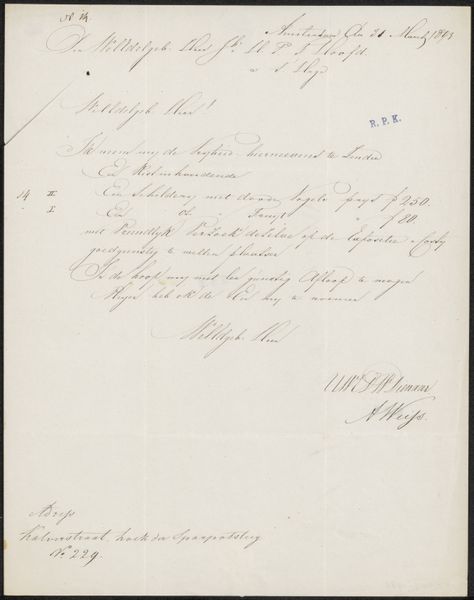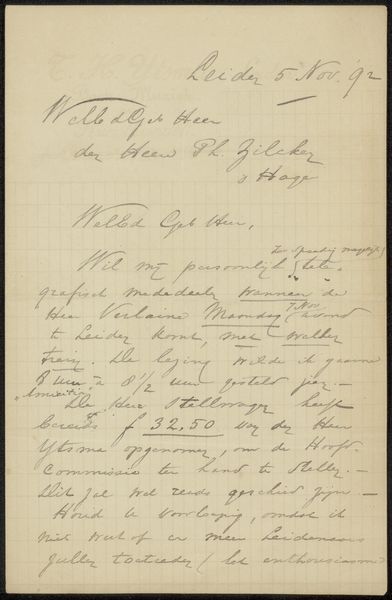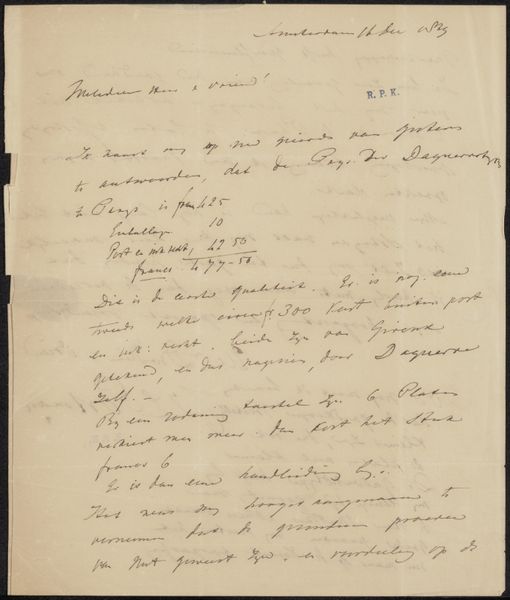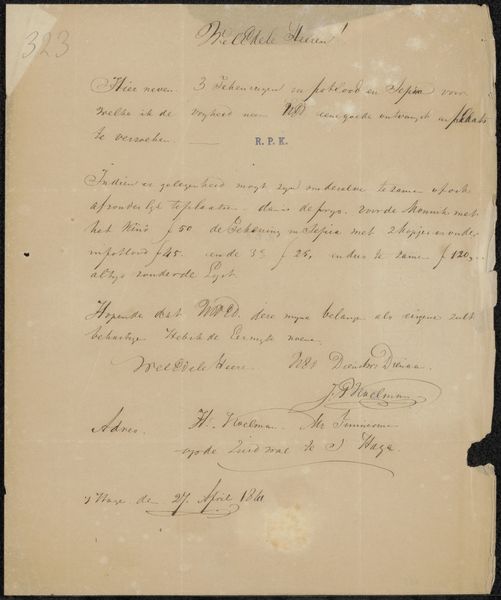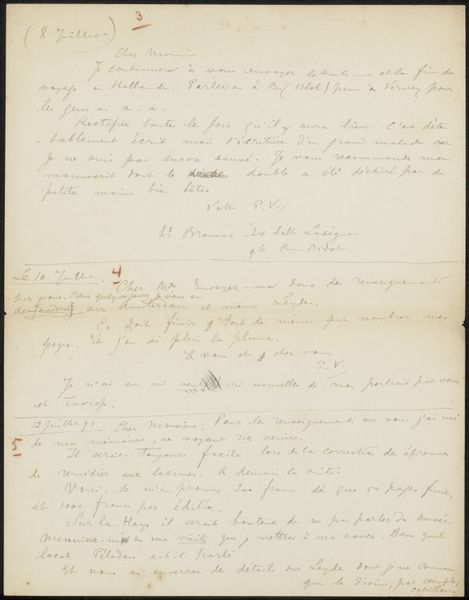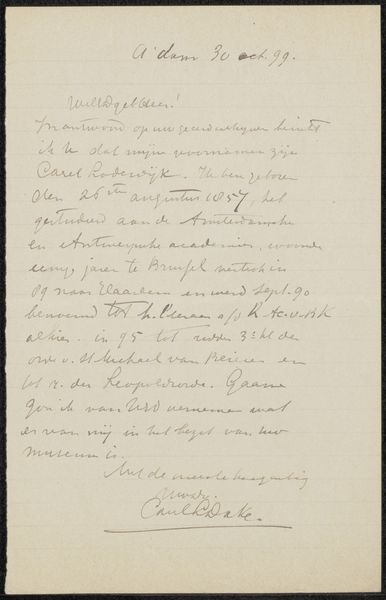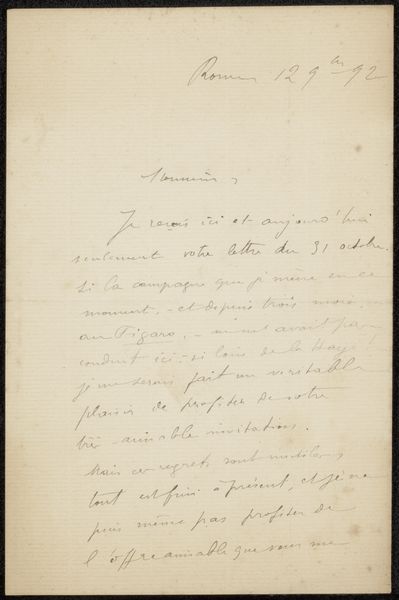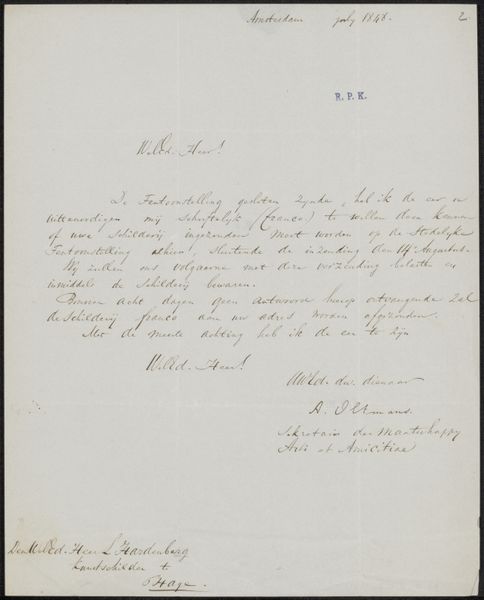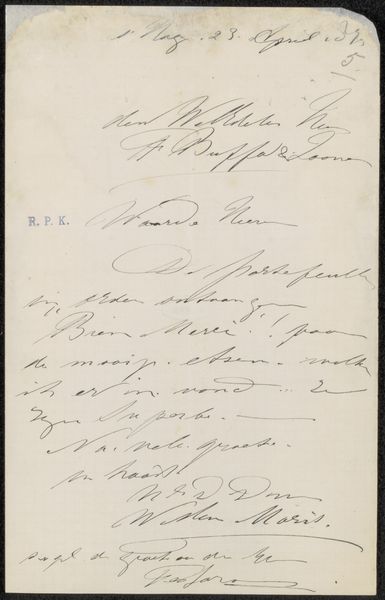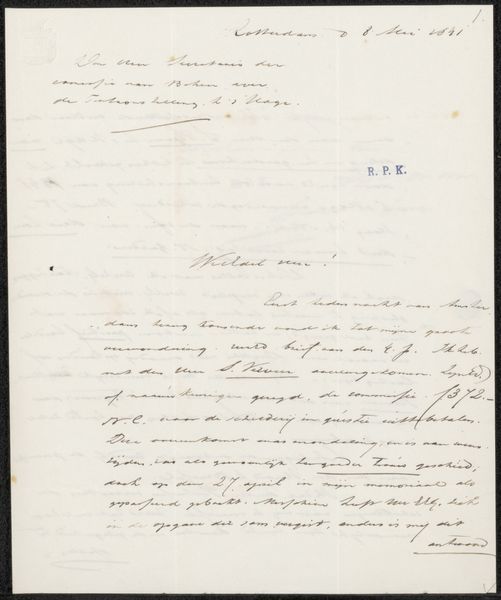
Brief aan de commissie van de Tentoonstelling van Levende Meesters in Den Haag Possibly 1848
0:00
0:00
drawing, paper, ink
#
drawing
#
paper
#
personal sketchbook
#
ink
#
realism
Copyright: Rijks Museum: Open Domain
Editor: This is “Brief aan de commissie van de Tentoonstelling van Levende Meesters in Den Haag,” thought to be from 1848, by Dominicus Anthonius Peduzzi, rendered in ink on paper. There’s a definite air of formality to it, given it’s a letter. What significance do you find in this particular piece of writing? Curator: The very act of writing, of inscribing thoughts onto paper, is inherently symbolic. Look at the careful hand, the deliberate strokes – even the smudges! They reveal not just a message, but a performance of identity. We're not just reading words, we are observing a self being constructed, perhaps even negotiating for acceptance. The letter *is* the art here, beyond what's said. Editor: So, you're saying the visual aspects carry as much weight as the content of the letter? Curator: Absolutely. Consider the context: "Tentoonstelling van Levende Meesters" – an exhibition of living masters. This letter is an attempt, a plea, perhaps, to join that hallowed group. What visual cues hint at anxiety or aspiration? Are there repeated forms or crossed-out words which carry greater meaning when examined together? Editor: Now that you mention it, the address seems meticulously written. The name, the street...all so precise. Is that precision trying to convey something beyond the words themselves? Curator: Precisely! And consider the absence of other visual elements, the starkness. Does this not amplify the symbolic importance of the writing itself, rendering it a potent form of self-portraiture? It's less about asking "what does the letter say?" and more about contemplating what does the writing DO? Editor: That’s really changed how I see it. Before, it was just an old letter, but now it seems like a very personal expression through formal means. Thank you! Curator: My pleasure! It's about uncovering the hidden stories within these visual remnants of the past.
Comments
No comments
Be the first to comment and join the conversation on the ultimate creative platform.
